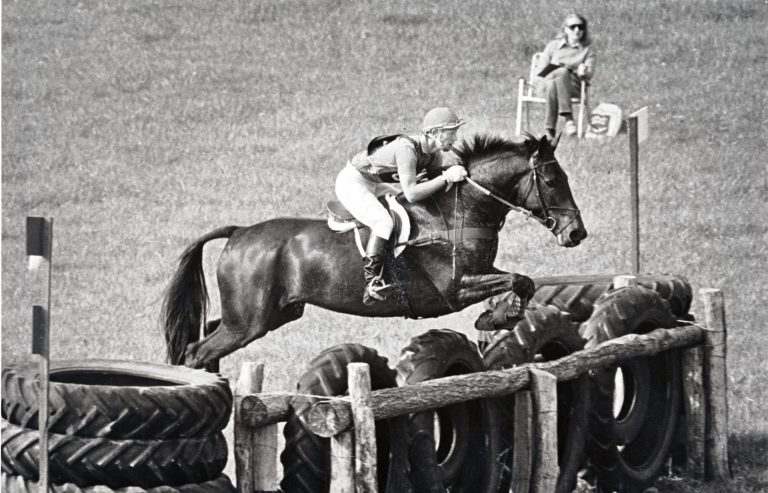What is your definition of the perfect college? The perfect program? The perfect career? The perfect life? Do you know? Ok, let’s be fair—who does? But, have you actually stopped for a moment to imagine what each of those perfect scenarios might be? Are any of those dreams and ideas a reality you can achieve and are you willing to make sacrifices?
In the two previous articles we discussed the concepts involved with determining the best type of academic focus for your equine interest and the various pathways to get to your goal. Using the information in those articles you have a much greater chance of identifying realistic options to pursue. Now it’s time to think about the additional factors necessary in making that final college decision. This third step takes you beyond a focus on enrolling and moves you to consider that all important concept of graduating. As Steve Covey said many years ago (in the classic best seller 7 Habits of Highly Effective People), “you need to begin with the end in mind.”

Thinking forward means uncovering and recognizing the “fit factors” important for a successful college path to graduation. These factors are, in many ways, less practical but no less important. In fact, our long-time experience in education tells us that they may actually be among the most important. Fit factors are the tangible and intangible characteristics that make you who you are and heavily impact what feels right to you.
Determining Fit Factors
Let’s use an analogy of choosing a horse compared to choosing a college. You know you want a horse as opposed to another animal (that would be step one—focus) and you need to determine what you want to do with it so you get the right performance potential (that’s step two—pathway). If those were the only two important decisions, then why would there be any other reason to choose one particular horse over another (step three—fit factors)? Does the breed matter for what you want to do? How about height? Color? Temperament? Gender? And how much can you reasonably commit to spend on the horse, his training, his housing, etc. We would bet that several of these fit factors would be critically important toward the likelihood that you will be happy to be around the purchased horse and want to work with it even on the bleakest of days. You will be happier if you are able to get a horse (focus) to use in a way that appeals to you (pathway) and matches your tangible and intangible needs and wants (fit factors). So you start searching, visit and try a number of horses and then you meet a horse and know he’s the one. Why? It matched most of your fit factors and your gut said, ‘”this one just feels right.”
The same process applies with college selection. You decide the focus—let’s say it’s a bachelor degree. And then you decide the pathway—let’s say it’s animal science. There are many choices out there for this focus and pathway. So what should come next? Our advice is to make your fit factor list before you go too far into the review and visit process. The most common areas on a fit factor list are size (what type of environment best fits your needs—small fish in big pond or big fish in a small pond?), location (close to home or far from home?) and costs (keep in mind that many students never come close to paying the sticker price posted for a college once financial aid and scholarships are applied). Here are some others to add to your list: Faculty: who they are, how they speak with you and their educational and professional backgrounds. Can you see yourself enjoying classes with them? Classmates: their backgrounds, attitudes and actions. Can you see yourself playing, studying and doing group work with them? The look of the campus: Can you see yourself living there, going to classes, going to events, etc.? And if there is an equine facility involved, how about the horses and staff? Does the environment, the people and the horses portray a positive, content and welcoming vibe? Can you imagine riding and working there? Will this place feel right to you as a place to live and learn?

You won’t know any of those factors unless you visit campuses and not just for open houses, but at other times when you can experience the realness of the people, the campus and the environment. Watch for a future article on how to get the most out of your visit. Choosing a college without visiting (and ideally more than once) would be a mistake just like buying a horse without trying it out would be a mistake.
Graduation statistics show the importance of fit factors. The overall 2013 graduation rate of New York 4-year public institutions was 38.7% in four years and 59.2% in six years. In Kentucky, the 4-year private institution rate was 38.1% in four years and 50.6% in six. In Florida, the 2-year public college rate was 12.4% in two years and 30.4% in three years. Please remember those numbers are averages across all colleges in that sector. Individual rates could vary both by college and within a college and from program to program, athlete to non-athlete, local students to those far from home and substantial financial aid packages to those with few college resources. You can find the rates of each college and university at the Chronicle of Higher Education link here.
These graduation statistics point back to the choices of the students. Many might have made the wrong choice because they didn’t consider the right set of fit factors for their success. Historically, distance from home has been a big factor. Coming home several times a semester for a home-cooked meal, to see your horse or attend an event with family may be important to you. If you thought you wanted a clean break from high school and one plane flight a semester is okay with your family, then that factor for you is important as well. But, if you picked an option and it didn’t really fit what you need and want, then you most likely changed colleges and became a non-graduate statistic for that college that you chose. And you are probably now going to spend more time and money to get back on track.
More Fit Factors to Consider
Finances are always a big factor in choosing a program and an institution. Plan for graduation, not just attending that first year. Can you afford to attend and enroll for all of the years for that program, not just the first year (and possibly longer than you originally thought)? Hoping that finances will work out is not a plan. Financial aid is based primarily on your resources and if your resources are relatively the same each year, your financial aid package will most likely be similar as well. If you can barely afford it the first year, you probably won’t see a dramatic change for future years.
Are you bringing your horse to college with you? Many colleges don’t encourage bringing a horse as a freshman because you are likely to be responsible for the day-to-day care as well as a role in caring for school horses. Taking both on could be problematic to balance your time and coursework.
If you are an athlete/rider, how is the team supported by the institution? Is it recognized and financially supported like any other athletic team or is it treated more as a club organization? How large is the team and will you have realistic opportunities to compete? None of these factors are either right or wrong, but they do impact your ability to be happy and therefore, successful to graduation.

Many well-intentioned individuals provide advice to choose potential colleges in three broad categories: the stretch schools, the practical schools and the safety schools. The problem with this philosophy is that in many situations, those choices ignore some of the fit factors that might be most important for you. Make sure that you narrow your options while keeping your fit factors first in your mind for each school. That will put you on the path to a successful choice and start to help with answering those “perfect” questions we asked in the beginning.
That cute, fast, rambunctious palomino probably won’t cut it in high level dressage finals. Likewise, a sun-loving, lot of action, big city type student probably won’t be successful in a small, rural, northern college. Fit is important. Make sure you are honest with yourself and your family to identify those characteristics that are most important to you. Until next time, ride on!










